How to identify scams like "Mac OS Firewall-Alert"
Mac VirusAlso Known As: Fake Mac OS Firewall-Alert
Get free scan and check if your device is infected.
Remove it nowTo use full-featured product, you have to purchase a license for Combo Cleaner. Seven days free trial available. Combo Cleaner is owned and operated by RCS LT, the parent company of PCRisk.com.
What kind of scam is "Mac OS Firewall-Alert"?
We have examined this scam and concluded that it is a technical support scam. Usually, these scams involve fake warnings or other "urgent" messages designed to deceive users into taking immediate action. Scammers use them to steal money and (or) personal information and sometimes to distribute malware.
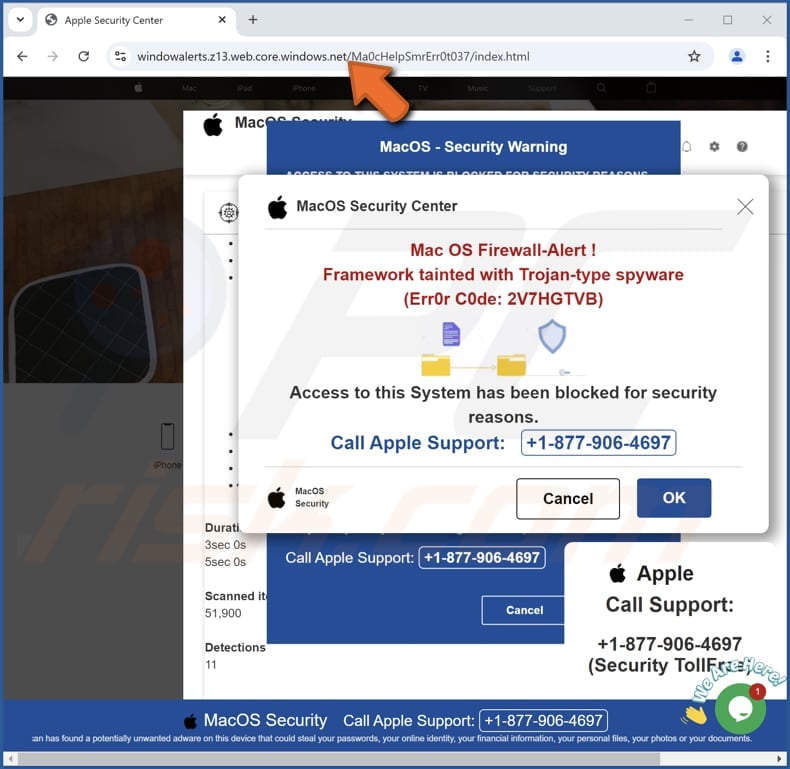
"Mac OS Firewall-Alert" scam overview
This fake security alert is designed to scare users into calling a fraudulent number. It falsely claims that the macOS firewall has detected Trojan-type spyware and that access to the system is blocked. The scam uses "MacOS Security Center" and "Apple Support" and a random-look error code ("2V7HGTVB") to appear legitimate.
This message is a scam and has no connection to Apple. Tech support scams often provide fake helplines to trick users into paying for bogus or unnecessary services (or products) or disclosing information (e.g., credit card details, login credentials, or ID card information). They are also used to deceive users into installing malware.
The malware distributed through these scams can be designed to encrypt files, inject more malware, steal sensitive information, mine cryptocurrency, or perform other malicious activities. Such infections can cause various issues, from system damage to financial losses.
Additionally, scammers use such scams to trick users into providing them with remote access to computers. A couple of examples of such scams are the TeamViewer and UltraViewer scams. With remote access to devices, fraudsters can harvest information, scam other users through infected devices (e.g., accessed accounts), and much more.
Users should ignore such messages, close deceptive pages, and never call the provided numbers to avoid monetary loss, identity theft, computer infections, and other issues.
| Name | Fake Mac OS Firewall-Alert |
| Threat Type | Phishing, Scam, Mac malware, Mac virus |
| Fake Claim | macOS firewall has detected Trojan-type spyware |
| Related Domain | windowalerts.z13.web.core.windows[.]net |
| Detection Names (windowalerts.z13.web.core.windows[.]net) | Yandex Safebrowsing (Phishing), Full List (VirusTotal) |
| Serving IP Address | 53.150.87.132 |
| Symptoms | Your Mac becomes slower than normal, you see unwanted pop-up ads, you are redirected to dubious websites. |
| Distribution methods | Deceptive pop-up ads, free software installers (bundling), torrent file downloads. |
| Damage | Internet browser tracking (potential privacy issues), display of unwanted ads, redirects to dubious websites, loss of private information. |
| Malware Removal (Windows) |
To eliminate possible malware infections, scan your computer with legitimate antivirus software. Our security researchers recommend using Combo Cleaner. Download Combo CleanerTo use full-featured product, you have to purchase a license for Combo Cleaner. 7 days free trial available. Combo Cleaner is owned and operated by RCS LT, the parent company of PCRisk.com. |
Conclusion
As a rule, scams like these use fake alerts to trick users into calling fraudulent support numbers or taking other harmful actions. It is important to recognize these tactics and never interact with suspicious pop-ups or phone numbers. Users should always verify security issues through official channels to avoid falling victim to scams.
Some examples of technical support scams are "Virus Alert 027341", "Access To This Apple Device Has Been Blocked", and "Apple Security Services".
How did I open a scam website?
Deceptive websites, including scam pages, can be accessed via links in phishing emails, push notifications from unreliable sites, fake buttons or similar content on shady web pages, misleading pop-ups, deceptive ads (including ads displayed by installed adware), and similar channels.
Users can also be directed to scam websites through rogue advertising networks commonly found on torrent sites, illegal streaming platforms, and similar sources. Additionally, scammers manipulate search engine results through poisoning techniques, making fraudulent sites appear at the top to lure users in.
How to avoid visiting scam websites?
Be cautious with ads, pop-ups, and links on suspicious web pages. Download applications from reliable sources, such as official app stores or websites. Stick to trusted search engines like Google and always verify website URLs to ensure they are legitimate before engaging with sites. Avoid enabling notifications from suspicious pages.
Regularly update all apps and the operating system, and perform regular security scans using a dependable antivirus tool. If your computer is already infected, we recommend running a scan with Combo Cleaner Antivirus for Windows to automatically eliminate all threats.
Appearance of "Mac OS Firewall-Alert" scam (GIF):
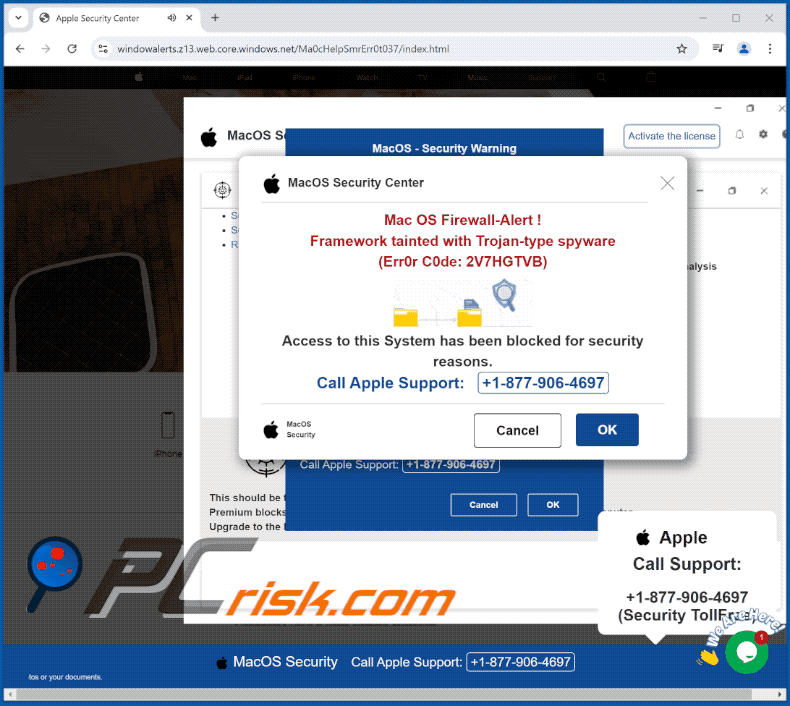
Text in the fake pop-up message:
MacOS Security Center
Mac OS Firewall-Alert !
Framework tainted with Trojan-type spyware
(Err0r C0de: 2V7HGTVB)Access to this System has been blocked for security reasons.
Call Apple Support: +1-877-906-4697
Instant automatic malware removal:
Manual threat removal might be a lengthy and complicated process that requires advanced IT skills. Combo Cleaner is a professional automatic malware removal tool that is recommended to get rid of malware. Download it by clicking the button below:
DOWNLOAD Combo CleanerBy downloading any software listed on this website you agree to our Privacy Policy and Terms of Use. To use full-featured product, you have to purchase a license for Combo Cleaner. 7 days free trial available. Combo Cleaner is owned and operated by RCS LT, the parent company of PCRisk.com.
Quick menu:
- What is "Mac OS Firewall-Alert"?
- STEP 1. Remove PUA related files and folders from OSX.
- STEP 2. Remove rogue extensions from Safari.
- STEP 3. Remove rogue add-ons from Google Chrome.
- STEP 4. Remove potentially unwanted plug-ins from Mozilla Firefox.
Video showing how to remove adware and browser hijackers from a Mac computer:
Potentially unwanted applications removal:
Remove potentially unwanted applications from your "Applications" folder:
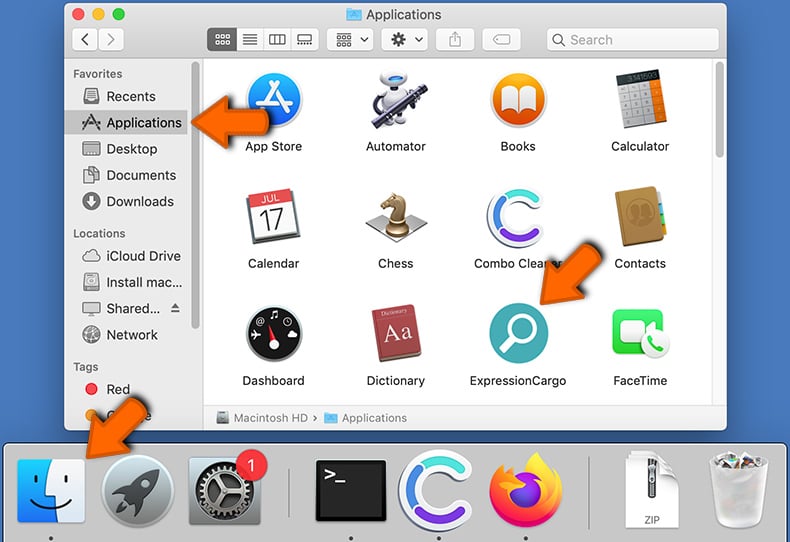
Click the Finder icon. In the Finder window, select "Applications". In the applications folder, look for "MPlayerX","NicePlayer", or other suspicious applications and drag them to the Trash. After removing the potentially unwanted application(s) that cause online ads, scan your Mac for any remaining unwanted components.
DOWNLOAD remover for malware infections
Combo Cleaner checks if your computer is infected with malware. To use full-featured product, you have to purchase a license for Combo Cleaner. 7 days free trial available. Combo Cleaner is owned and operated by RCS LT, the parent company of PCRisk.com.
Remove adware-related files and folders
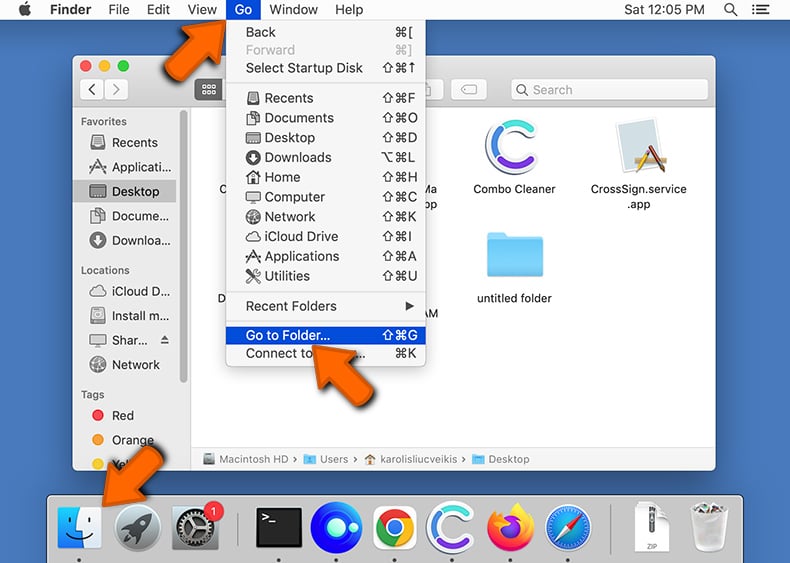
Click the Finder icon, from the menu bar. Choose Go, and click Go to Folder...
 Check for adware generated files in the /Library/LaunchAgents/ folder:
Check for adware generated files in the /Library/LaunchAgents/ folder:
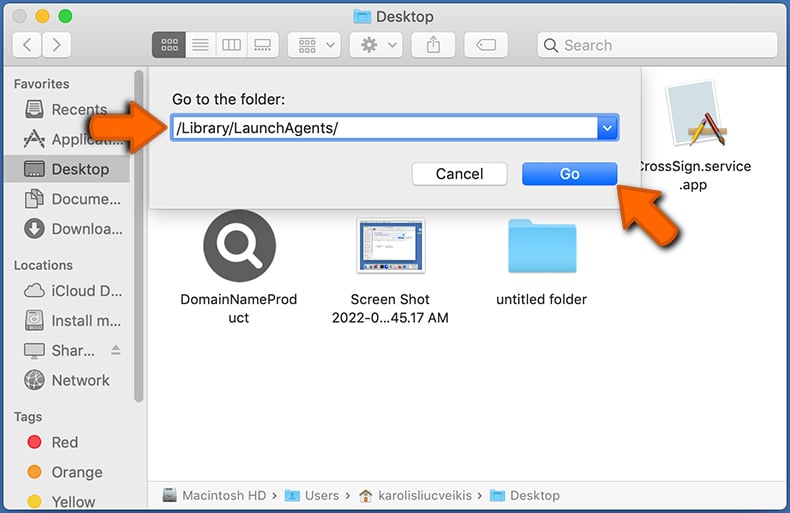
In the Go to Folder... bar, type: /Library/LaunchAgents/
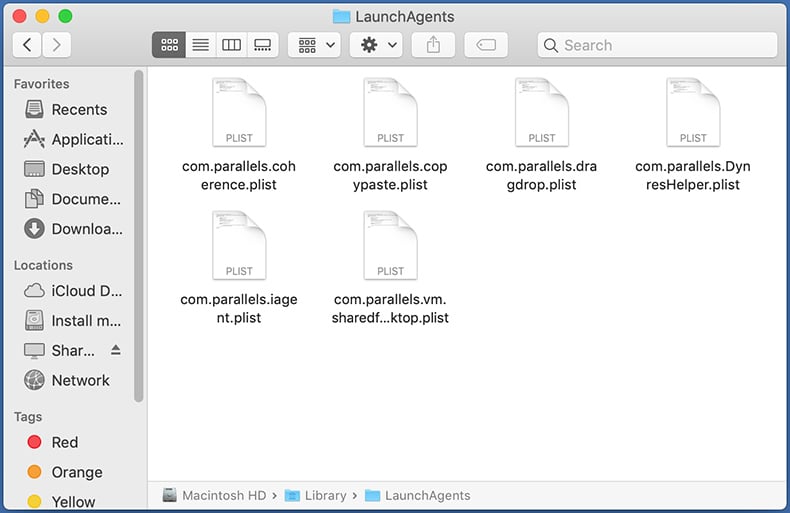
In the "LaunchAgents" folder, look for any recently-added suspicious files and move them to the Trash. Examples of files generated by adware - "installmac.AppRemoval.plist", "myppes.download.plist", "mykotlerino.ltvbit.plist", "kuklorest.update.plist", etc. Adware commonly installs several files with the exact same string.
 Check for adware generated files in the ~/Library/Application Support/ folder:
Check for adware generated files in the ~/Library/Application Support/ folder:
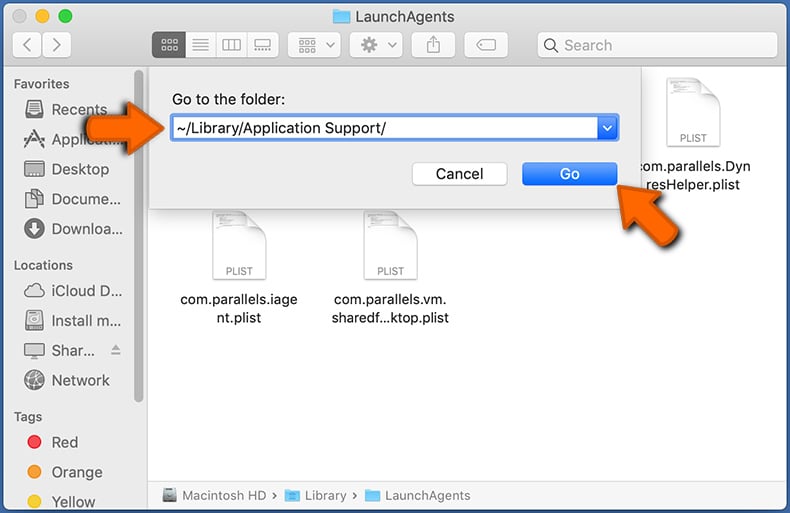
In the Go to Folder... bar, type: ~/Library/Application Support/
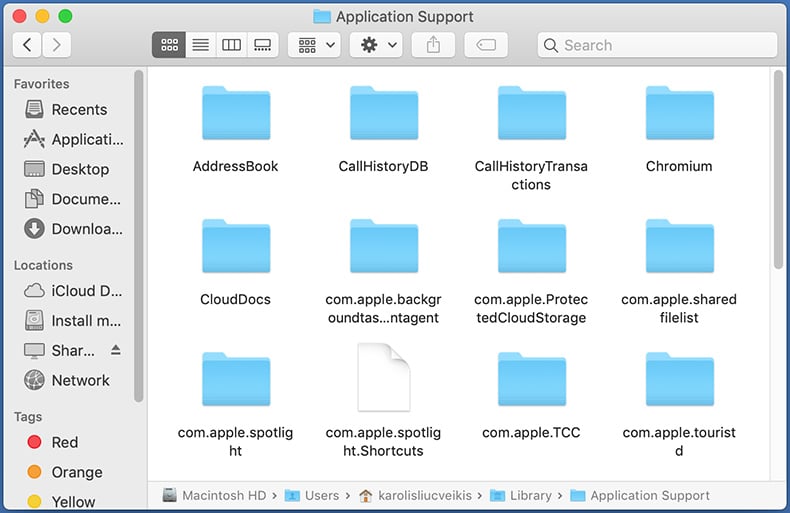
In the "Application Support" folder, look for any recently-added suspicious folders. For example, "MplayerX" or "NicePlayer", and move these folders to the Trash.
 Check for adware generated files in the ~/Library/LaunchAgents/ folder:
Check for adware generated files in the ~/Library/LaunchAgents/ folder:
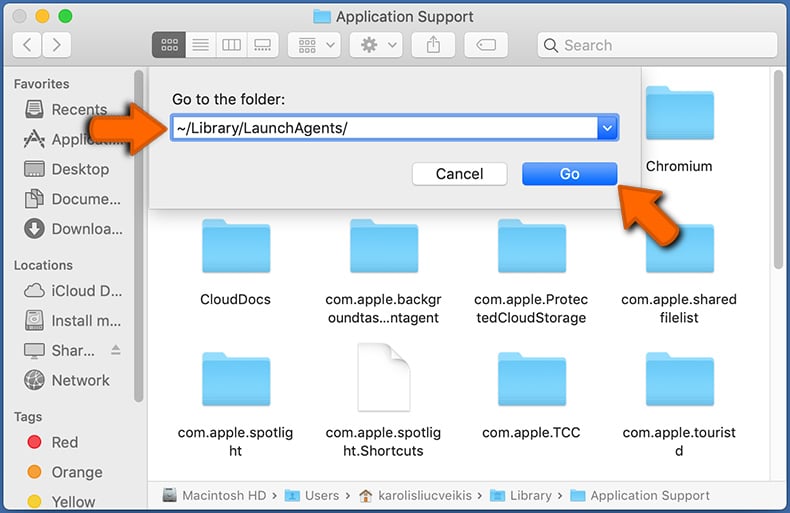
In the Go to Folder... bar, type: ~/Library/LaunchAgents/
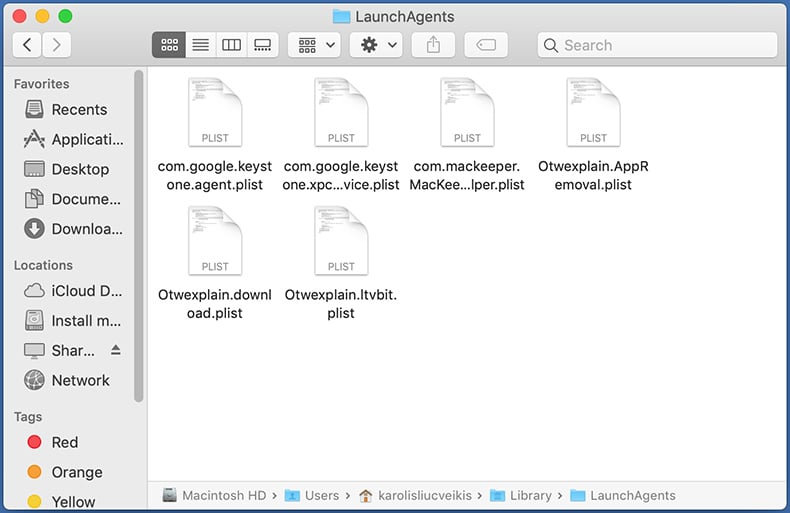
In the "LaunchAgents" folder, look for any recently-added suspicious files and move them to the Trash. Examples of files generated by adware - "installmac.AppRemoval.plist", "myppes.download.plist", "mykotlerino.ltvbit.plist", "kuklorest.update.plist", etc. Adware commonly installs several files with the exact same string.
 Check for adware generated files in the /Library/LaunchDaemons/ folder:
Check for adware generated files in the /Library/LaunchDaemons/ folder:
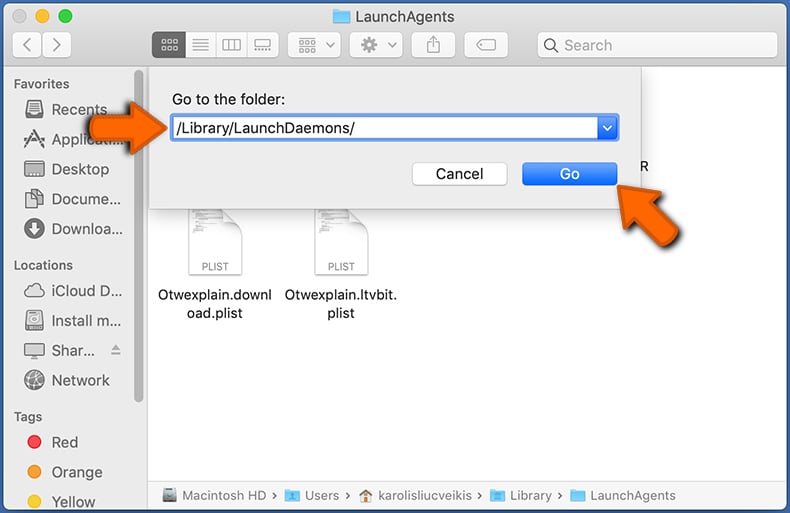
In the "Go to Folder..." bar, type: /Library/LaunchDaemons/
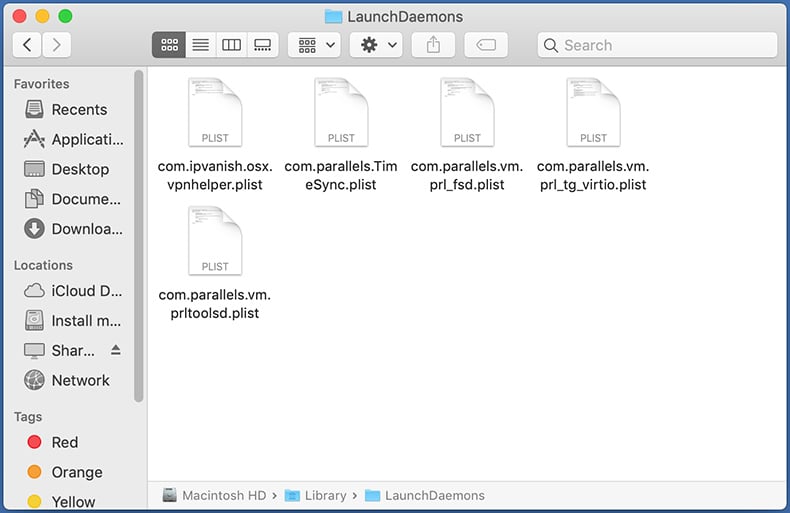
In the "LaunchDaemons" folder, look for recently-added suspicious files. For example "com.aoudad.net-preferences.plist", "com.myppes.net-preferences.plist", "com.kuklorest.net-preferences.plist", "com.avickUpd.plist", etc., and move them to the Trash.
 Scan your Mac with Combo Cleaner:
Scan your Mac with Combo Cleaner:
If you have followed all the steps correctly, your Mac should be clean of infections. To ensure your system is not infected, run a scan with Combo Cleaner Antivirus. Download it HERE. After downloading the file, double click combocleaner.dmg installer. In the opened window, drag and drop the Combo Cleaner icon on top of the Applications icon. Now open your launchpad and click on the Combo Cleaner icon. Wait until Combo Cleaner updates its virus definition database and click the "Start Combo Scan" button.
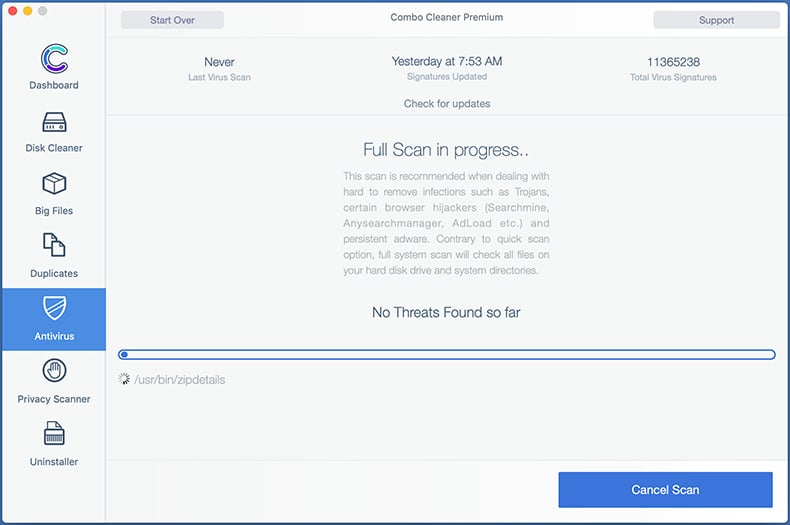
Combo Cleaner will scan your Mac for malware infections. If the antivirus scan displays "no threats found" - this means that you can continue with the removal guide; otherwise, it's recommended to remove any found infections before continuing.
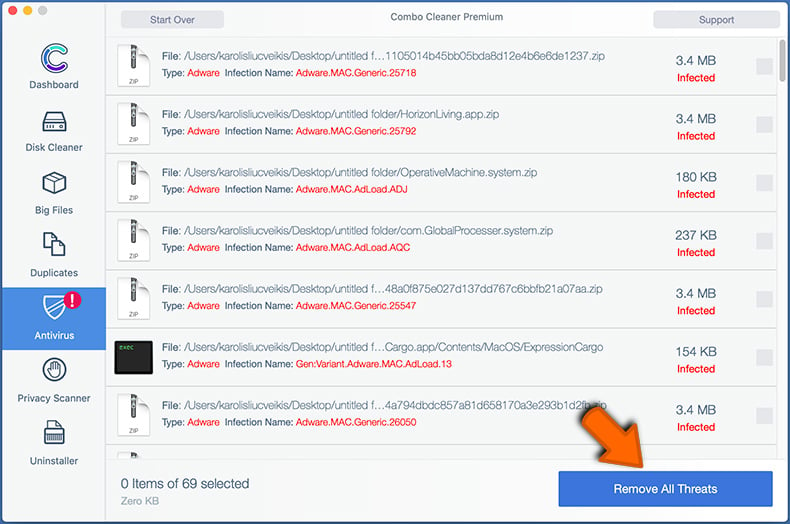
After removing files and folders generated by the adware, continue to remove rogue extensions from your Internet browsers.
Remove malicious extensions from Internet browsers
 Remove malicious Safari extensions:
Remove malicious Safari extensions:
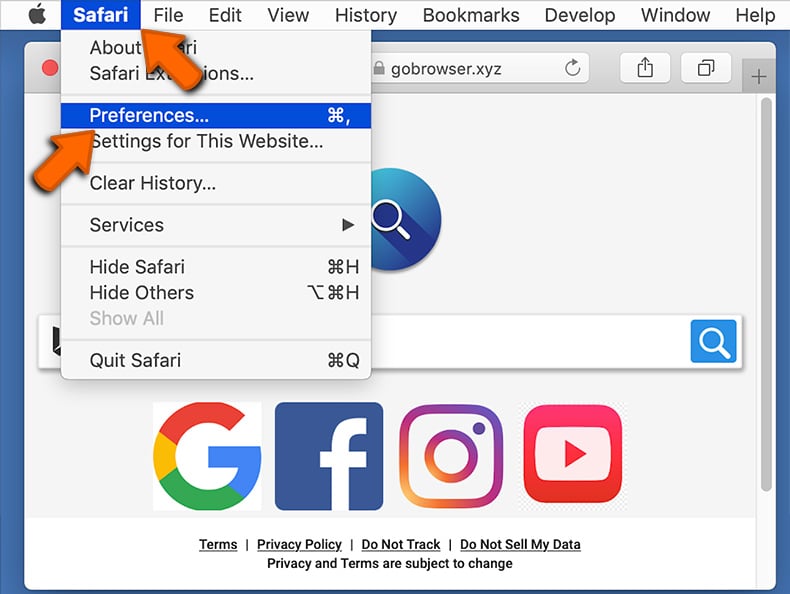
Open the Safari browser, from the menu bar, select "Safari" and click "Preferences...".
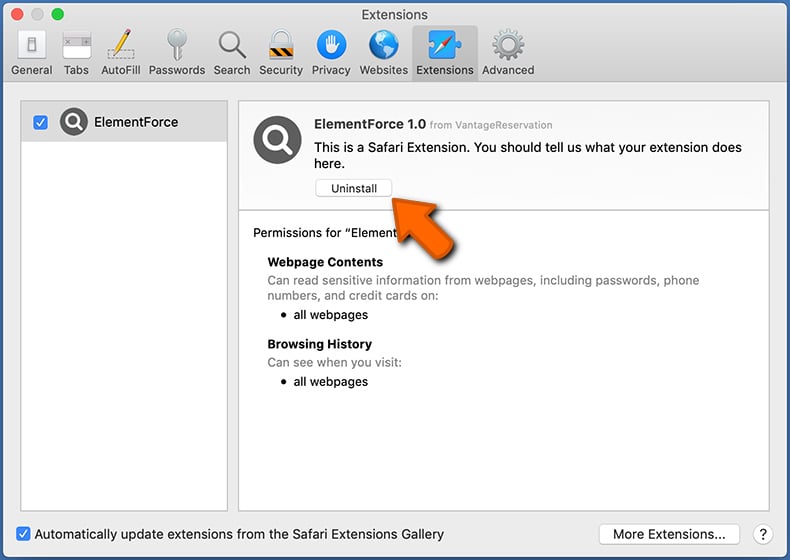
In the preferences window, select "Extensions" and look for any recently-installed suspicious extensions. When located, click the "Uninstall" button next to it/them. Note that you can safely uninstall all extensions from your Safari browser - none are crucial for regular browser operation.
- If you continue to have problems with browser redirects and unwanted advertisements - Reset Safari.
 Remove malicious extensions from Google Chrome:
Remove malicious extensions from Google Chrome:
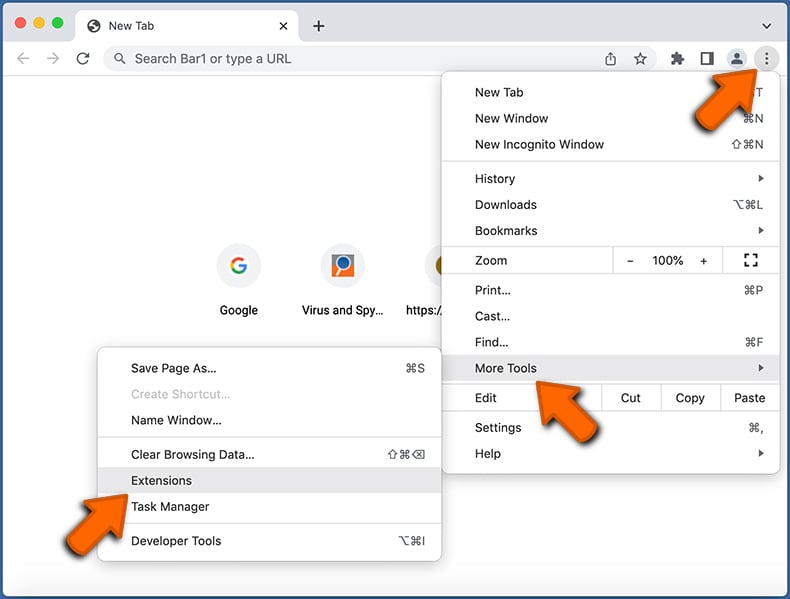
Click the Chrome menu icon ![]() (at the top right corner of Google Chrome), select "More Tools" and click "Extensions". Locate all recently-installed suspicious extensions, select these entries and click "Remove".
(at the top right corner of Google Chrome), select "More Tools" and click "Extensions". Locate all recently-installed suspicious extensions, select these entries and click "Remove".
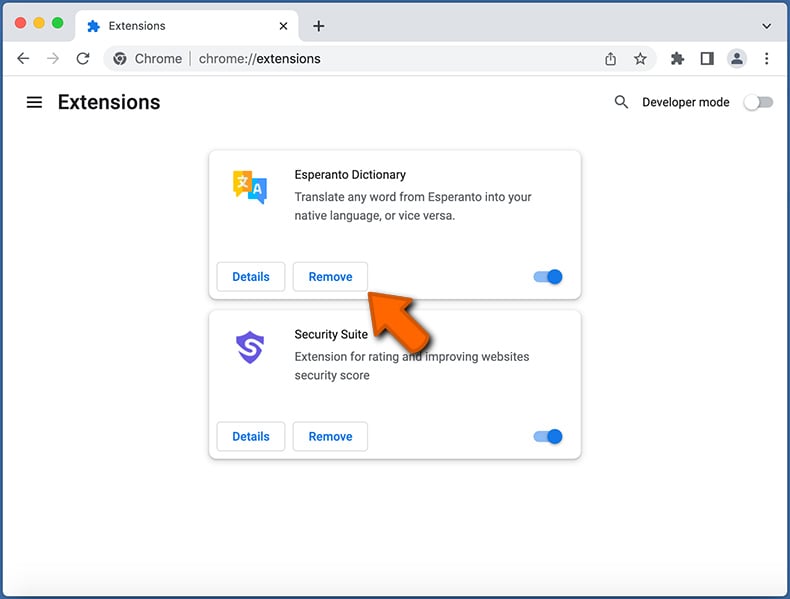
- If you continue to have problems with browser redirects and unwanted advertisements - Reset Google Chrome.
 Remove malicious extensions from Mozilla Firefox:
Remove malicious extensions from Mozilla Firefox:
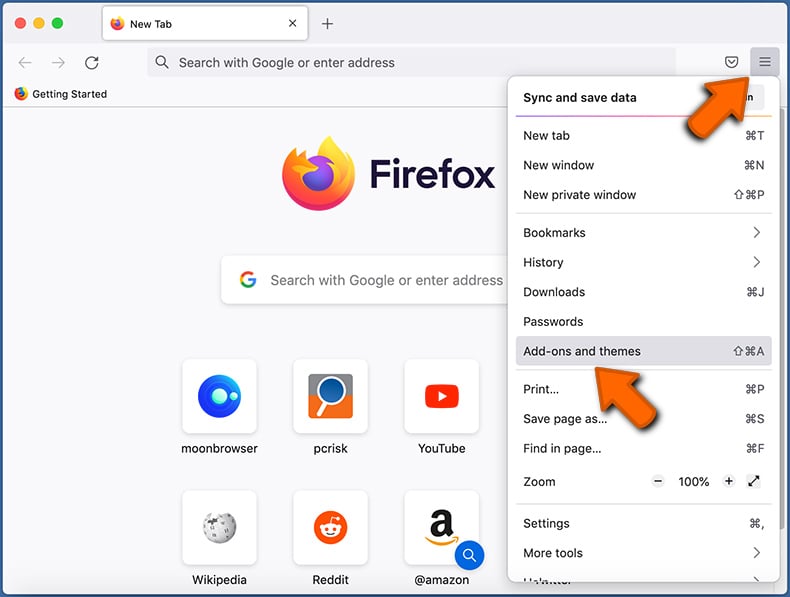
Click the Firefox menu ![]() (at the top right corner of the main window) and select "Add-ons and themes". Click "Extensions", in the opened window locate all recently-installed suspicious extensions, click on the three dots and then click "Remove".
(at the top right corner of the main window) and select "Add-ons and themes". Click "Extensions", in the opened window locate all recently-installed suspicious extensions, click on the three dots and then click "Remove".
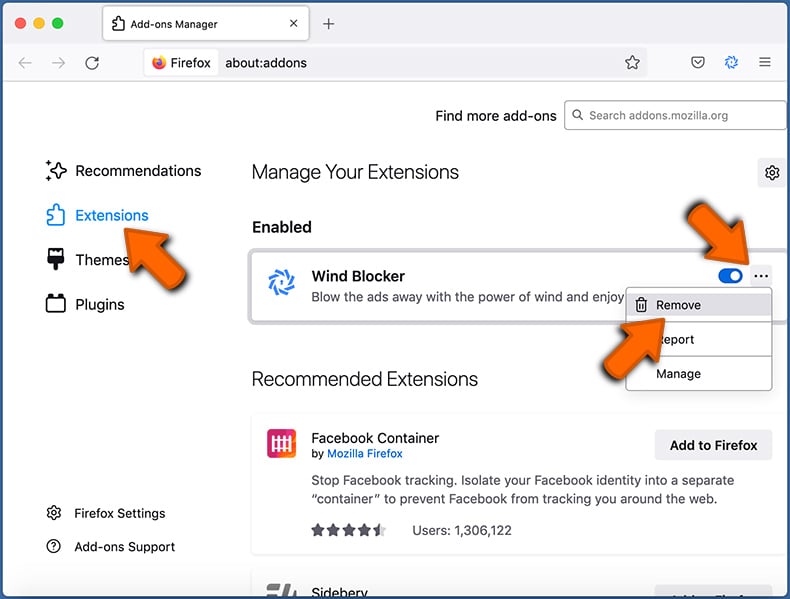
- If you continue to have problems with browser redirects and unwanted advertisements - Reset Mozilla Firefox.
Frequently Asked Questions (FAQ)
What is a pop-up scam?
A pop-up scam typically displays a fraudulent warning or message on a bogus website, claiming that a device is infected or in other danger, in an attempt to lure the user into calling a fake support number or taking other harmful actions.
What is the purpose of a pop-up scam?
Typically, these scams are created to extract sensitive information, steal money from unsuspecting users, or deploy malware.
Why do I encounter fake pop-ups?
Users can be directed to scam websites through malicious ad networks (often used by torrent sites, illegal movie streaming pages, and similar sites), search engine manipulation, deceptive emails, fake links, misleading pop-ups, adware, and other deceptive methods.
Will Combo Cleaner protect me from online scams?
Combo Cleaner scans the websites you visit and identifies malicious ones, including those hosting pop-up scams. If a site is flagged as harmful, you will receive an instant warning, and access will be blocked to keep you safe.
Share:

Tomas Meskauskas
Expert security researcher, professional malware analyst
I am passionate about computer security and technology. I have an experience of over 10 years working in various companies related to computer technical issue solving and Internet security. I have been working as an author and editor for pcrisk.com since 2010. Follow me on Twitter and LinkedIn to stay informed about the latest online security threats.
PCrisk security portal is brought by a company RCS LT.
Joined forces of security researchers help educate computer users about the latest online security threats. More information about the company RCS LT.
Our malware removal guides are free. However, if you want to support us you can send us a donation.
DonatePCrisk security portal is brought by a company RCS LT.
Joined forces of security researchers help educate computer users about the latest online security threats. More information about the company RCS LT.
Our malware removal guides are free. However, if you want to support us you can send us a donation.
Donate
▼ Show Discussion